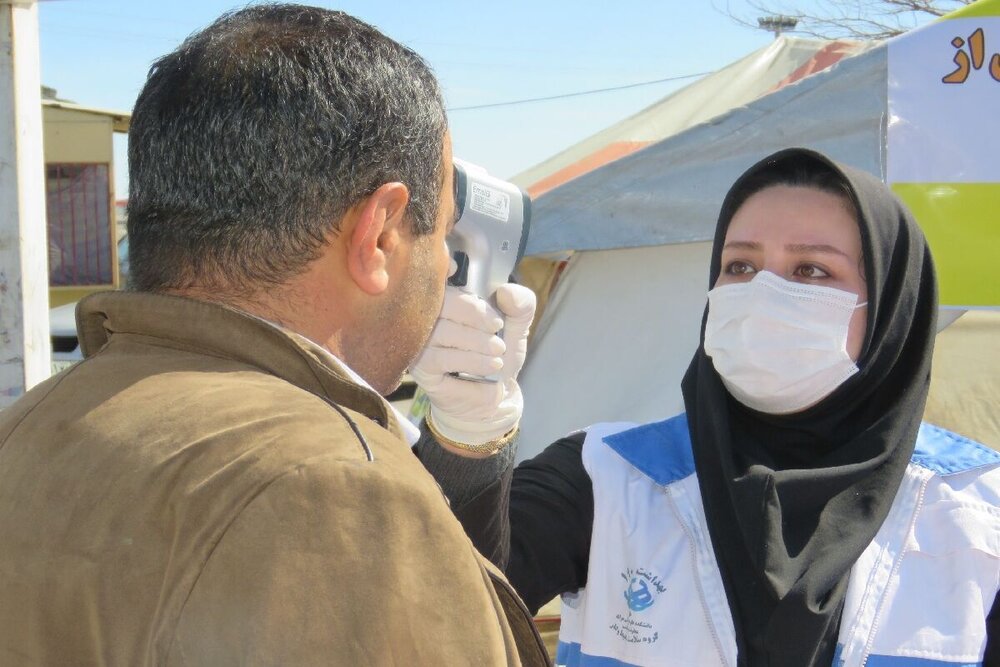COVID-19 takes lowest toll on foreign nationals in Iran: official

TEHRAN – Iran had the lowest coronavirus cases and mortality among refugees and foreign nationals compared to the population it is hosting, Mehdi Mahmoudi, the director for foreign nationals and immigrants at the Ministry of Interior, has said.
Referring to the measures taken for non-Iranian citizens during the pandemic, he said that since the very beginning, when the country became infected with the disease, the community of foreign nationals in our country was no exception to this issue, and prevention programs and necessary measures have been taken for this group.
"We identified foreign nationals in need and tried to provide them with livelihood assistance, as well as health packages and self-protective items needed to prevent the infection," he explained.
He added that every year about 800,000 illegal foreign nationals are arrested and deported.
Hossein Zolfaghari, deputy minister of interior for security and law enforcement, announced in September that some 672,000 foreign nationals illegally residing in Iran are expelled annually from the country in the interest of national security.
“We provide various services to foreign nationals in the country, especially in the field of healthcare and medical services, skills training, employment, livelihood, and unexpected events,” he stated.
He went on to highlight that about 850,000 of them are allowed to reside in Iran as displaced, however, the average annual international aid is $30 million, which is less than 10 percent of the expenses of this number of people.
There are 40,000 Afghan students in the country, according to the official report, 17,000 of them are graduated, he explained.
He added that 47,000 people were trained and 10 percent of legal refugees were covered by insurance with the help of the UNHCR, and other foreign nationals can pay for health insurance like Iranians.
The issue of granting citizenship to children born to foreign men was also approved as a law so that so far 1,290 children of Iranian women who married foreign men have received Iranian citizenship, he emphasized.
Some 2,852 foreign nationals were infected with COVID-19, of which 294 died and the rest recovered, which was far less than the Iranian population, he concluded.
Iran ramped up its production of essential medical equipment, and independent entrepreneurs – refugees included – have redirected their efforts towards contributing to the national COVID-19 response.
Undocumented Afghans who have access to free primary health services and similarly free COVID-19 related testing, treatment, and hospitalization, just like nationals.
Situation of foreign nationals
Iran is host to one of the largest and most protracted urban refugee situations in the world and has provided asylum to refugees for four decades.
The latest official government statistics in 2014, there are 951,142 Afghan refugees and 28,268 Iraqi refugees living in Iran. Many of the refugees living in Iran are the second and third generation, according to the United Nations High Commissioner for Refugees (UNHCR).
About 97 percent of refugees live in urban and semi-urban areas, while 3 percent are residing in 20 refugee resorts run by the UNHCR's main government counterpart.
In addition to Afghan refugees, there are about 2.5 million Afghans living in Iran, including those having a passport and undocumented Afghans. 450,000 Afghan who did not have identity cards or birth certificates have received Iranian visas that allow them to live, work or study in the country.
In Iran, UNHCR is seeking $16.2 million for its COVID-19 emergency, while requires an additional $98.7 million to support Iran in maintaining and sustaining its commendable inclusive refugee policies, under the umbrella of the Solutions Strategy for Afghan Refugees (SSAR).
Shahnam Arshi, deputy director for the infectious diseases management department of the Ministry of Health said in late August that all foreign nationals infected with coronavirus receive medical treatment free of charge in Iran.
So far, at least 4 trillion rials (nearly $95 million at the official rate of 42,000 rials) have been spent only for the treatment of registered foreign nationals, he stated.
COVID-19 new cases, death toll
In a press briefing on Sunday, Health Ministry spokesperson Sima-Sadat Lari confirmed 13,053 new cases of COVID-19 infection, raising the total number of infections to 854,361. She added that 603,445 patients have so far recovered, but 5,796 still remain in critical conditions of the disease.
During the past 24 hours, 475 patients have lost their lives, bringing the total number of deaths to 44,802, she added.
Lari noted that so far 5,788,016 COVID-19 tests have been conducted across the country.
She said the high-risk “red” zones include provinces of Tehran, Isfahan, Qom, East Azarbaijan, South Khorasan, Semnan, Qazvin, Lorestan, Ardebil, Khuzestan, Kermanshah, Kohgiluyeh-Boyerahmad, Gilan, Bushehr, Zanjan, Ilam, Khorasan Razavi, Mazandaran, Chaharmahal-Bakhtiari, Alborz, West Azarbaijan, Markazi, Kerman, North Khorasan, Hamedan, Yazd, and Kordestan.
The provinces of Hormozgan, Fars, Golestan and Sistan-Baluchestan are also on alert.
FB/MG
Leave a Comment